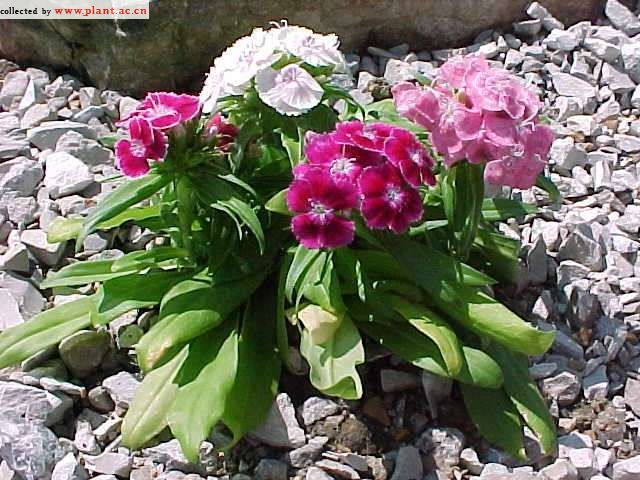Dianthus barbatusSweet William
科:石竹科
Family:Caryophyllaceae
属:石竹属
common name:Sweet William
introduce:Plant Type: Herbaceous perennial
Family: Caryophyllaceae
Missouri Native: No
Native Range: Southern Europe
Height: 1 to 2 feet
Spread: 0.5 to 1 foot
Bloom Time: May - To frost
Bloom Color: Red, pink, white, and bicolors
Sun: Full sun to part shade
Water: Dry to medium moisture
Maintenance: Medium
General Culture:
Winter hardy to USDA Zones 3-9. This is a short-lived perennial that is perhaps best grown as a biennial. However, many gardeners simply purchase cold treated plants in spring and grow them as annuals. Moreover, many of the new cultivars will bloom the first year from seed if the seed is started early enough. Sweet William is best grown in deep, organically rich, well-drained soils in full sun, but generally appreciates some light afternoon shade in hot summer climates such as the St. Louis area. In optimum growing conditions it will reseed each year and remain in the garden for many years as if it were a long-lived perennial. Double-flowered forms will not come true from seed, however. Prompt deadheading of spent flowers (shear back large plantings) promotes perennial tendencies. Seed may be planted directly in the garden in late spring for bloom the following year. Some nurseries sell seedlings in early fall that may be planted immediately for bloom the following year. Nurseries commonly sell plants in spring for flowering the same year.
Noteworthy Characteristics:
Sweet William typically grows 12-24?tall and features small flowers held in dense, flat-topped terminal clusters (3-5?wide). Many cultivars are available in commerce, including double-flowered forms as well as some dwarf plants (4-8?tall). Flowers come in vivid shades of red, pink, white and bicolor, sometimes with a contrasting eye, and with fringed petals that are bearded on the inside. Bloom from late spring to early summer. Flowers may be fragrant, although many of the newer cultivars have no scent. Lance-shaped medium green leaves (to 4?long).
Problems:
Susceptible to crown rot and rust, particularly in poorly-drained soils. Watch for snails and slugs.
Uses:
Beds and borders. Containers.
